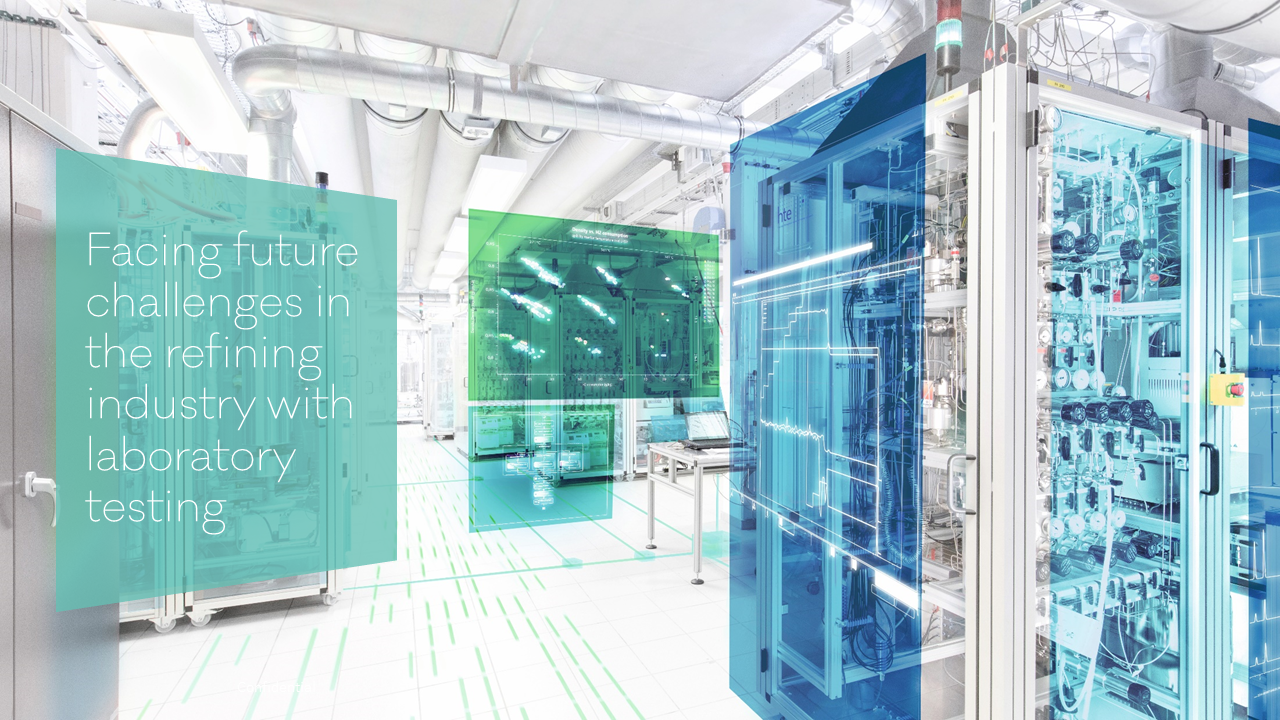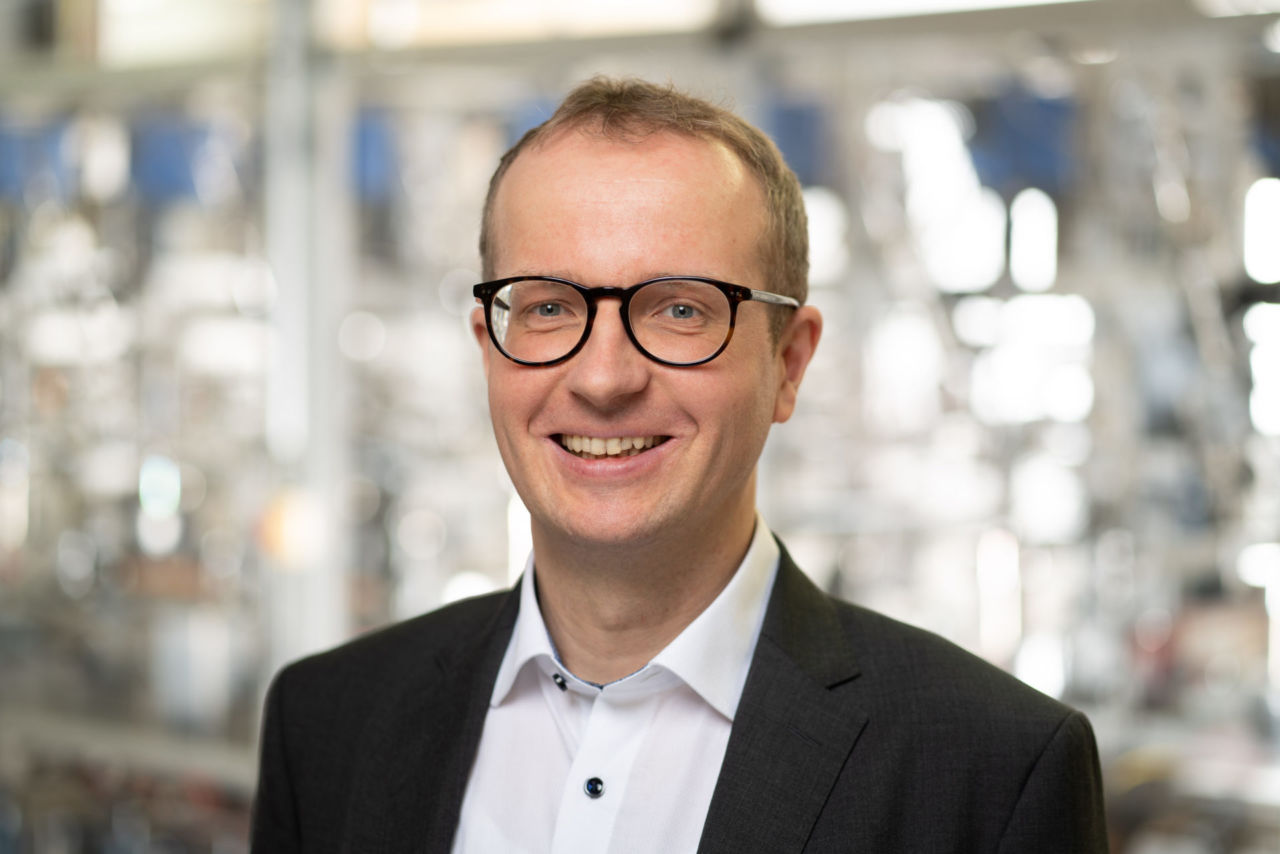Facing future challenges in the refining industry with laboratory testing

In conversation with some of hte’s experts – Teodor Trotus, Enrico Lorenz, and Robert Henkel
A very warm welcome to this talk about facing future challenges in the refining industry with laboratory testing with some of hte’s experts. Could you please tell us about yourself and your current role at hte?

Teodor Trotus (TT): My name is Teodor Trotus. I am leading hte’s hydroprocessing segment. Our core expertise is the performance testing of heterogeneous catalysts using industrial feedstocks stemming mainly from refinery ranging from low boiling naphtha to heavy residues and solid waxes. Our work supports catalytic processes at a catalyst development and process optimization stage. We also help refineries select the catalysts from the market best suited for their processes.
Enrico Lorenz (EL): I am Enrico Lorenz and the segment lead for petrochemicals at hte. The petrochemicals segment provides solutions for the upgrading of refinery streams toward olefins, aromatics, and basic chemical feedstocks. Creating added value for petrochemical refineries by implementing high throughput technology for catalyst research drives our work at hte.
Robert Henkel (RH): My name is Robert Henkel and I studied Technical Chemistry and Heterogenous Catalysis. In my position as Business Development Manager at hte GmbH, my colleagues and I work very closely together with our customers in order to identify their needs and provide them with the best solutions.
What are the main upcoming challenges for refineries where laboratory testing at hte can support important decisions?

RH: Refineries need to adjust their product portfolio and have to consider producing larger quantities of olefins or aromatics in order to increase their profitability. Furthermore, the processing of renewable feedstocks, such as pyrolysis oils or vegetable oils as well as more severe feedstocks, is becoming more and more alluring to refineries. These changes need to be swiftly implemented by our customers and to do so hte offers exciting test solutions and workflows addressing refineries typical concerns related to catalyst change outs, quality control, troubleshooting, and much more.
How can high throughput expedite commercialization and reduce R&D expenses?
EL: Developing a catalyst and driving it towards commercialization requires extensive studies, each of those screens various parameters providing more insights into catalyst activity selectivity and decay. For example, the formulation to shape a powder into an extrudate or a sphere includes precursor synthesis, support addition, the choice of different formulation agents, and post treatments. All of these steps can influence the performance of the catalyst. Using high throughput technology enables important descriptors to be identified, and thus to determine the best catalyst formulation. We support the powder screening of explorative material as well as catalyst upscaling.
When looking at conversion processes in a refinery – the feedstocks range from very heavy residue feedstocks to light naphtha and gas fractions. Each conversion unit is highly specialized and even small changes, as for example in the coprocessing of renewable feedstocks, can require large investments – how flexible can a laboratory unit be when testing different process parameters?

TT: hte’s test units have a modular design featuring a great flexibility with respect to upgrading or revamping options even after commissioning. Considering the feedstocks, products, and reactor type, we can distinguish between the units designed for batch processes, gas phase processes, gas to liquid processes, trickle bed processes, and short contact time processes.
Challenges are the implementation of features such as an extra liquid pump or an extra gas supply, loading an even larger reactor or adding an extra heating circuit. Inevitably, there are limitations arising from the available amount of space and the number of components available.
Nevertheless, it should be stressed that a unit designed for gas phase processes can be used for a wide range of processes, such as naphtha reforming or isomerization, olefin oligomerization, and alkylation reactions. For trickle bed units, the hydroprocessing of all crude oil fractions from kerosene to residues can be successfully achieved.
For any potential challenge we may face, whether it is plugging, corrosion, closing an element balance, preventing product crystallization, or characterizing biphasic product mixtures – an hte unit can be adjusted to overcome it.
Can high throughput help maximize the overall earnings of a site/process?
EL: The benchmarking of commercial material using high throughput technology enables our customer to select more rapidly and thoroughly the best performing material for their application. Different temperatures, contact times and special arrangements can be screened in parallel under their relevant process conditions. The catalyst can be tested for its performance as well as lifetime and impurity tolerance.
What type of advantages can a refinery gain from a test at hte?
RH: At hte we have been developing over two decades a significant expertise in catalytic testing in close collaboration with our international client base in many different fields. With regards to the conventional and upcoming refinery challenges, we are in the position to cover nearly every catalytic process within a refinery using laboratory high throughput or bench scale testing. This entails that we offer all competencies and services our customers require under one roof. Our customers can benefit from our test experience in those areas of expertise, e.g. for processing of renewable feedstocks, while, having their test results delivered in a swift and efficient manner.
Refineries operate a wide range of catalytic processes where the timescales of catalyst deactivation range from several years in hydroprocessing application to several seconds in FCC – how can laboratory scale tests evaluate catalysts with such a wide range of lifetimes and process conditions?
TT: Laboratory testing, especially with high throughput technology, offers the great advantage that it can generate data at rates, which would simply be unachievable with pilot plants. Getting the right data that matches the performance of the catalysts under industrially relevant process conditions in a commercial scale reactor requires the right technology and the proper experimental design. For this purpose, we always recommend testing catalysts with an industrial feed from the refinery and including the incumbent catalyst system as extrudates in a test, if one is available.
To address the reaction at different time scales of deactivation on a technological point of view, we can distinguish the following scenarios:
Catalysts deactivating over a period of years
In this case, activity tests require a few weeks for the initial stabilization; thereafter, activity tests are straightforward. The difficulty here lies in comparing catalyst stabilities. To achieve this, an accelerated catalyst deactivation protocol is needed because no one can wait years to get the results. With high throughput testing technology, accelerated deactivation studies can be performed either after the standard activity test, or in parallel to these, thereby allowing shorter experiment times overall.
Catalysts deactivating over several days or weeks
These can be tested over one entire deactivation cycle under defined conditions of constant conversion or constant selectivity. Industrially, such processes might be performed in setups, where fresh material is continuously added. On a laboratory scale, a fixed bed configuration operating at constant product properties can provide information about the activity and relative stability of the catalysts.
Systems deactivating in a timespan in the order of hours
For this, fixed bed testing also requires ensuring that all of the products can be analyzed at the same time interval after the catalyst is activated. For this, you can start feeding sequentially each fixed bed reactor to ensure that the analysis time is synchronized with time on stream for all catalysts. In addition, the use of sample collection systems for later GC analysis and fast analytics, via infrared spectroscopy for example, help maximize the information density over short deactivation cycles.
For processes, where the deactivation is in the order of seconds or minutes, hte has developed a unique laboratory tool – the micro downflow unit (MDU), which is operated under conditions relevant to FCC processes and generate results consistent with those of commercial FCC units on a laboratory test. This technology can be applied to any short contact time processes.
Therefore, by choosing the proper testing technique and experimental design, all of the relevant catalyst systems from the market can be compared head-to-head in a matter of a few weeks in order to help the refinery make a well-informed choice for their catalyst selection.

For further information, join hte’s free webinar on September 28th, 4pm (CEST) and 29th, 9am (CEST) on “Future challenges for refineries – laboratory testing solutions to maximize profitability”.